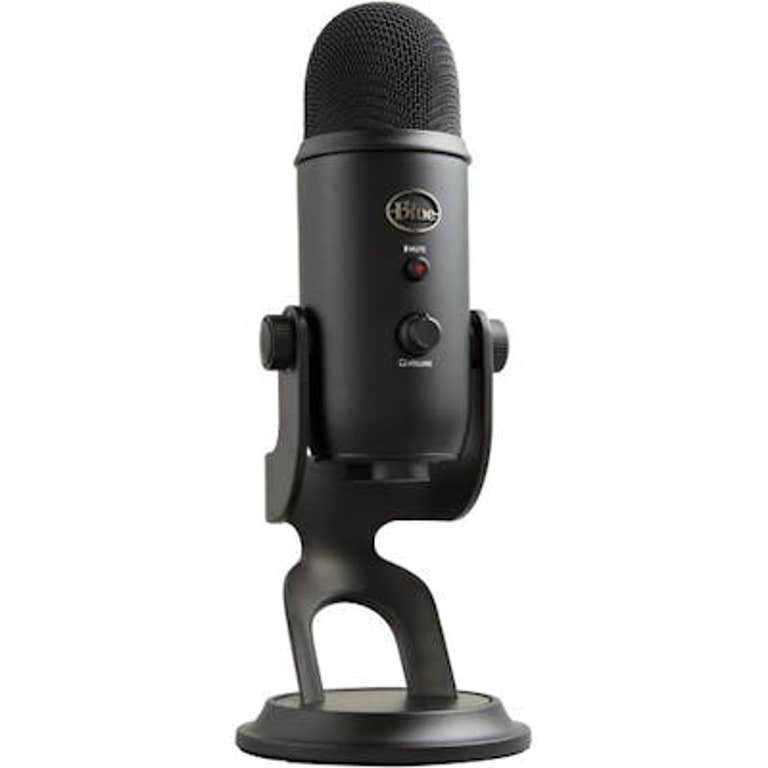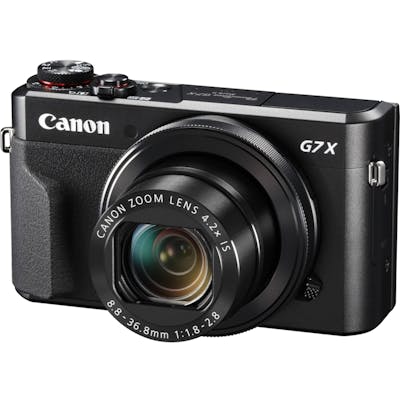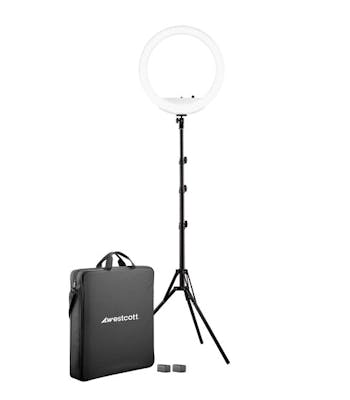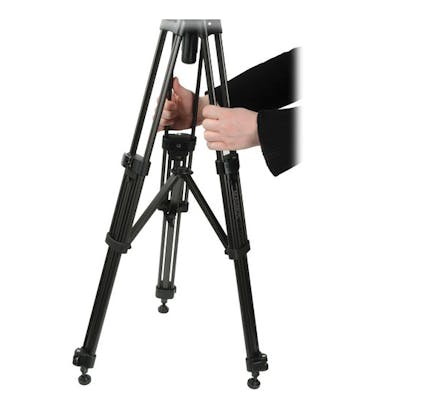
The Daily Dot may receive a payment in connection with purchases of products or services featured in this article. Read our Ethics Policy to learn more.
If you want to get into the content creation game, learning how to make ASMR videos is a great place to start. These videos have gained popularity in recent years, but there are always so many specific niches to fill, and the barrier to entry is low — you just need a passion for ASMR and a few pieces of good equipment to do things right.
What are ASMR videos?
ASMR stands for autonomous sensory meridian response, and in this scenario, refers to a pleasant tingling sensation people get from certain visual or audio sASMR stands for autonomous sensory meridian response, and in this scenario, it refers to a pleasant tingling sensation people get from certain visual or auditory stimuli. As everyone experiences these things differently, there is no set group of sounds or visual experiences that trigger this type of response in every person. This means videos featuring a wide variety of stimuli function as ASMR content, although certain sounds like typing, whispering, and crinkling paper tend to be particularly popular.
Forming your ASMR setup: What to keep in mind when making ASMR videos.
So, will you need an ASMR camera right from the start? While you don’t necessarily have to choose between visual or audio ASMR, many people who seek out this type of content prefer one to the other, which may be worth considering when looking to build your audience. If you opt to focus on the more popular auditory ASMR, then, being very particular about how your equipment, setup, and editing impacts your sound is particularly important. Conversely, if you focus on visual ASMR, you probably don’t need top-of-the-line video equipment, although you will want to make sure things are clear and well-lit.
Can I make ASMR videos with my phone?
Absolutely! If this is all you have to work with, don’t let that deter you from getting started on your ASMR setup. You may still want to invest in additional equipment, such as lighting or even a good external microphone, but many modern smartphones are adequate for beginners learning how to make ASMR videos.
Now, let’s talk about equipment.
ASMR Equipment for Beginners: The Basics
These are the items you will absolutely need in order to get started making ASMR videos — a microphone, a camera, some sort of lighting setup, and a computer with video and audio editing software to pull everything together for your audience. Once you’ve got your ASMR setup together, it’s time to begin learning how to do ASMR content the right way. Let’s start from the beginning:
Microphones

Your ASMR equipment journey will nearly always start with the microphone. What type of microphone you use for ASMR will depend on a number of factors, including your budget, your setup, and whether there’s a specific type of content you want to focus on. For most creators, a condenser microphone may be the best choice, due to how well they tend to pick up both low
and high sounds.
From there, you have the choice between a USB microphone, such as the ever-popular Blue Yeti, or an XLR microphone, like Shure’s SM7B Vocal Microphone. USB mics plug directly into your computer and are great for beginners or anyone with a limited budget or space. XLR microphones require additional equipment (which we will get to later) but tend to be higher quality and allow for a better degree of control over your sound. Binaural microphones, like the 3Dio FS, are also growing in popularity among ASMR creators, although you may want to get your feet wet before switching to one of these. You can also check out more options for the best ASMR microphones here.
Cameras

Even if you are focusing on auditory ASMR, you’ll likely want to include a video component to remain competitive and stick out among search results. Plus, some viewers simply prefer experiencing ASMR both visually and aurally.
Finding the right ASMR camera isn’t nearly as hard as one may think. As previously mentioned, your phone camera will most likely do the trick here, but if you’d like to invest in a better quality camera — especially if you plan on creating more content than just ASMR videos in the future — take a look at the Sony ZV-1 or the Canon PowerShot G7 X Mark II. However, if you do stick with your smartphone camera for now, looking into lenses is a great way to customize your video.
Lighting

In terms of choosing a better ASMR equipment setup that will make every clip shine, lighting is your #1 friend. Lighting is a component frequently overlooked by creators starting out, but one that can easily make a huge difference in video quality. You shouldn’t need anything too complicated for ASMR videos — a ring light such as Westcott’s Bi-Color LED Kit should suffice. If you are using your phone as a camera, take a look at the Raya Bendie-Brite instead, or if you really want to invest in softbox lighting for a more flexible set up, Godox softbox lights are affordable and well-reviewed (but don’t forget to buy stands).
ASMR Equipment Beyond the Lens: Computer and Editing Software
A lot of learning how to do ASMR the right way doesn’t start until post-production. Chances are you already have a computer that will serve as a place to edit your videos. If not, ideally you should look for something with at least 16GB of RAM, and 128GB of storage (although you may want to grab an external hard drive for your videos while you’re at it). Creatives are frequently drawn to Apple products, such as the MacBook Air, due to the included software and user-friendly interface.
For video editing, the iMovie software included with Apple products will do the trick, but you could also invest in Final Cut Pro or Adobe Premiere Pro for a better editing experience.
Either way, if your videos focus on sound, you will likely want a separate audio editor. Avid Pro Tools is the cream of the crop, but using Apple’s included GarageBand or Logic Pro X upgrade are also great options.
Perfecting Your ASMR Setup with Accessories
In a perfect world, you would grab all of these accessories for your ASMR video creation setup, but sometimes budget and space constraints limit us. Take a look over your ASMR equipment options and figure out what will be the most beneficial for you right away as you learn how to make ASMR videos, and which items might be something to pick up somewhere down the line.
Microphone Stand

Depending on what kind of microphone you end up buying, you may need to invest in a microphone stand. USB mics often come with their own, but XLRs will require an additional purchase. A good stand is important because a quality microphone will pick up even the smallest sounds — meaning you don’t want to be touching the microphone or simply lay it down next to whatever you’re recording, or it will likely be sensitive to sounds you don’t intend to record.
Getting an ASMR equipment setup is easier than ever nowadays. If you plan on recording things at your desk, a tabletop microphone stand is a simple, study option. If you need more flexibility with your setup, go ahead and look into a tripod stand that will allow you to record at different heights and position the microphone however best suits your needs.
Pop Filter
Even the best quality microphones can benefit from a pop filter — a small screen that blunts popping sounds made by certain letters (like “p”) or other harsh noises. These can be incredibly difficult to edit out naturally, and in something like ASMR, they can severely damage the listening experience.
Fortunately, pop filters are not expensive, and getting one that attaches to your mic stand will save you a lot of trouble later on. Add this into your ASMR setup for an even more polished, professional sound.
Headphones

It’s nearly always worth investing in high-quality ASMR equipment once you have the resources available. Having a good pair of over-the-ear headphones while you’re recording and editing your audio will help you prepare the best ASMR listening experience for your audience. Ideally, you want monitor headphones for this, as they process audio differently than headphones intended for enjoying music, and will allow you to hear your audio files more accurately as you edit.
Depending on your budget, the Audio-Technica ATH-M20x and the Sony MDR-7506 headphones both provide clean audio, a closed design that helps isolate what you’re listening to from external distractions, and comfort for long editing sessions.
Tripod

The tripod is the unsung hero of the ASMR equipment setup. Regardless of whether you’re using your smartphone or a dedicated camera to record your videos, a tripod is a necessity that will allow you to appropriately position your camera and keep it steady while you record. While you can find cheap tripods pretty easily, investing a little more in something of better quality will likely last longer — once a tripod starts bowing to the weight of a camera, it becomes useless and you’ll have to buy a new one anyway.
For a dedicated camera setup, go with something like the Magnus VT-4000 Tripod System if you can (or a Magnus VT-300 if you need to cut corners). Be sure to check the specs and weight capacity on whatever tripod you choose to make sure it’s a good fit for your camera. For smartphone users, you can go for an adaptor to use with a traditional tripod, or a simple desktop setup like the Apexel Mini Tripod.
Optional Equipment for an ASMR Setup
The gear above may be all you ever need to make the best ASMR videos for your audience, but some creators might need a little extra something to get moving in the right direction.
Audio Interface
If you opted to go with an XLR microphone, you’ll need an audio interface to connect it to your computer. The obvious drawback of this is more equipment, which requires more space and more money. The upside is that two XLR microphones are often better quality than USB microphones, and the audio interface will allow you more control over your sound.What you prefer to start out with is fully up to you, but if you need an interface as part of your setup, the Focusrite Scarlett 2i2 2×2 is a popular and well-tested option for simple one or two-line-in recording. Unless you plan on running more than two microphones at once, you don’t need anything more complicated than this.
Sound Dampening
Learning how to do ASMR the right way means adapting to a range of surroundings. If external noise is a concern while recording — say, if you live in an apartment, or on a busy street, or share a home with other humans or animals — you may want to invest in some sound-dampening gear to provide a more controlled recording environment.
Generally, even throwing down rugs on hardwood floors or hanging up thick blankets against the walls and doors will go a long way towards dampening some of the more basic, annoying sounds like cars driving by or the hum of a refrigerator in the next room. You may think this won’t be a problem now, but once you have your microphone and headphones, you’ll start to realize just how much external sound carries over into your recordings.If you find normal blankets don’t cut it, or you just prefer to look into other options, look for blankets or foam panels made specifically for acoustic dampening.
Final Thoughts
While looking for the right equipment for making ASMR videos may seem overwhelming, keep in mind you can always start with just the most basic gear — a camera, microphone, and some way to edit your videos — and expand your arsenal as you determine what works best for you and what you want to accomplish as a creator.




